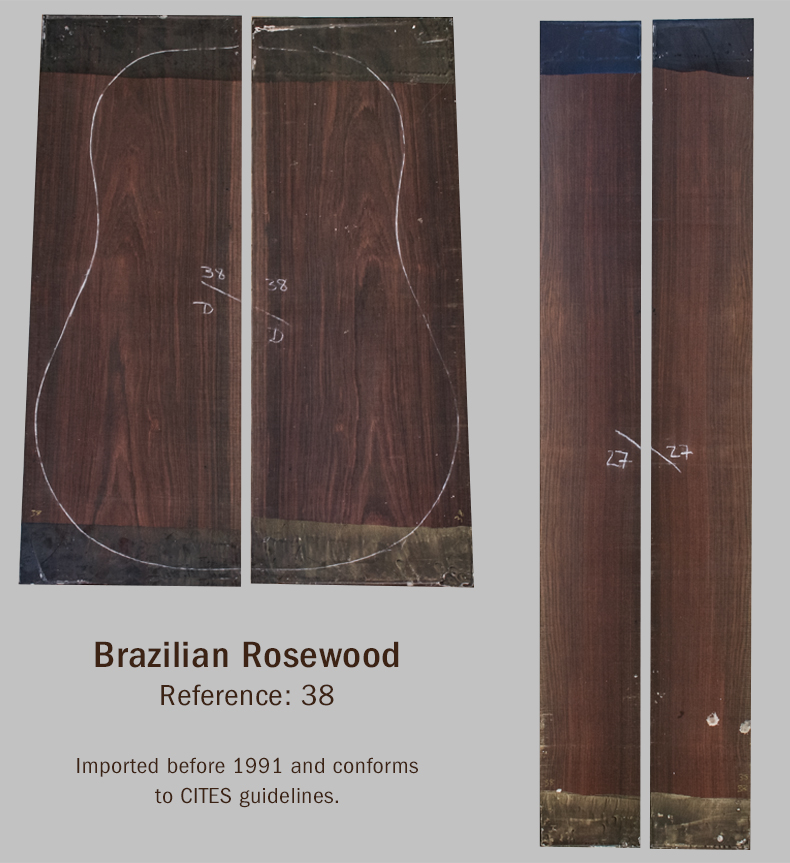
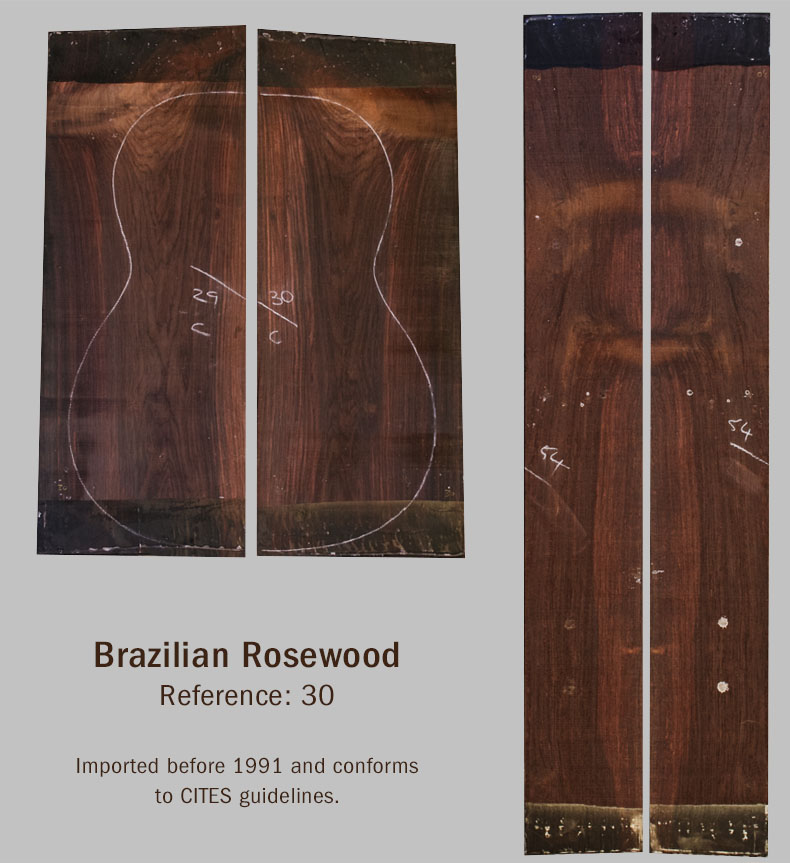
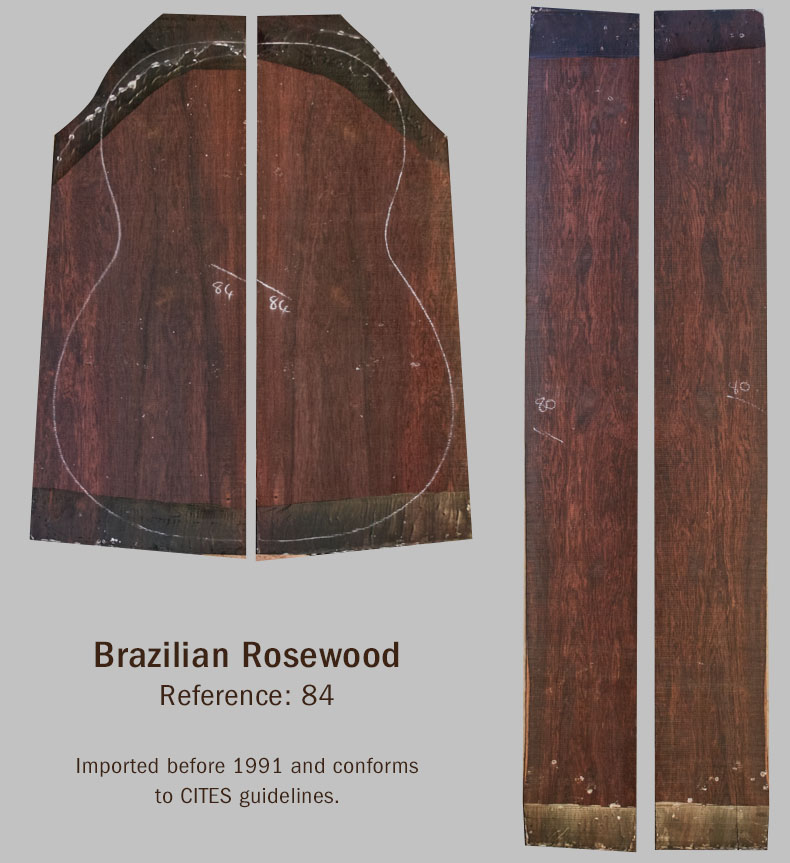
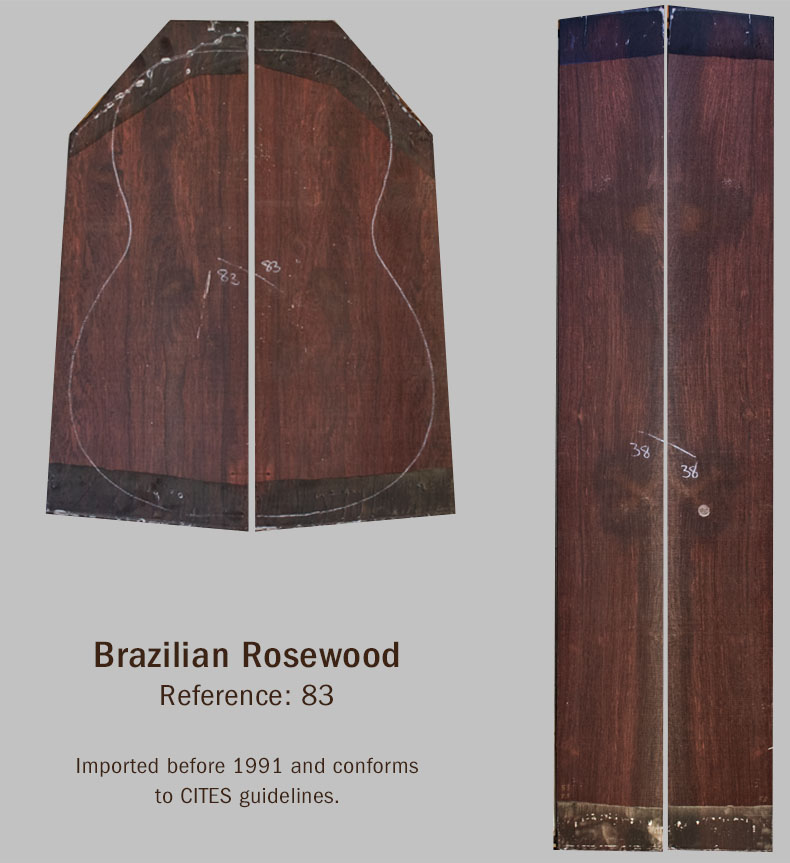
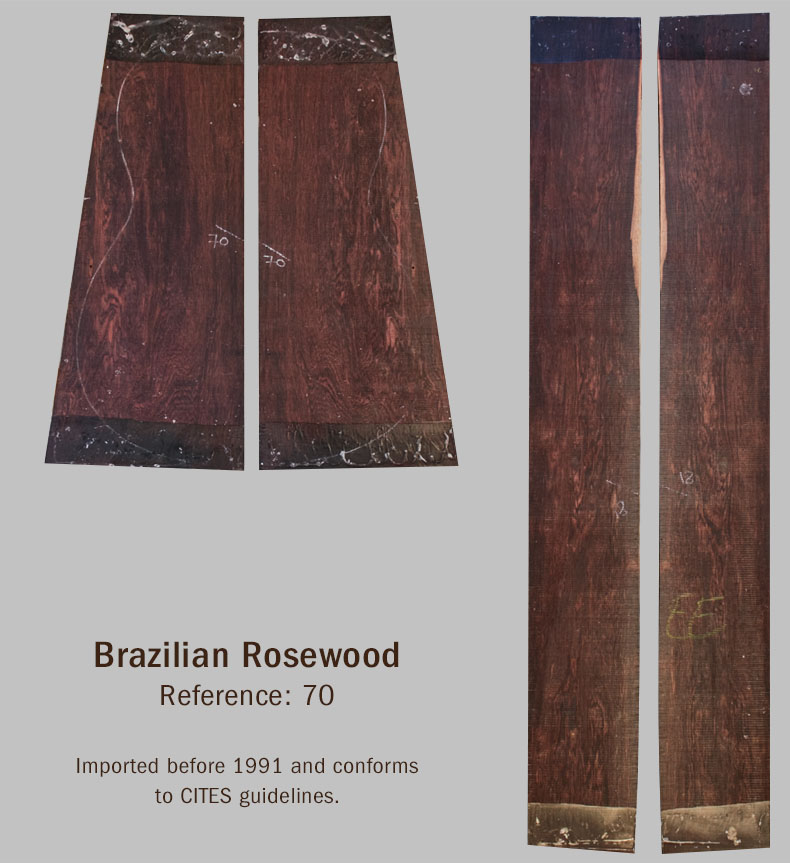
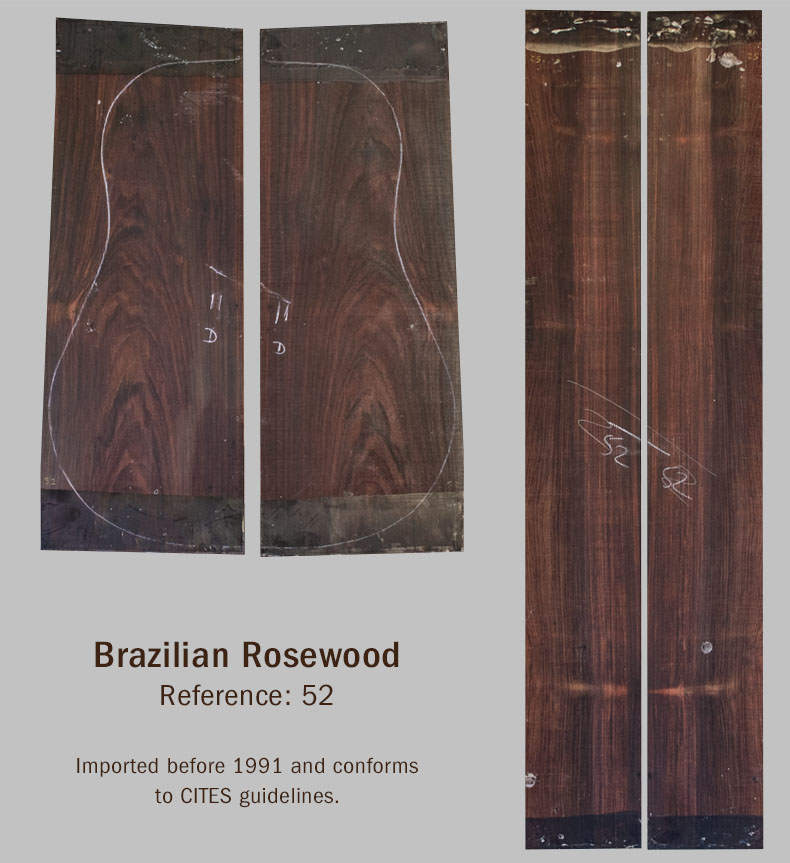
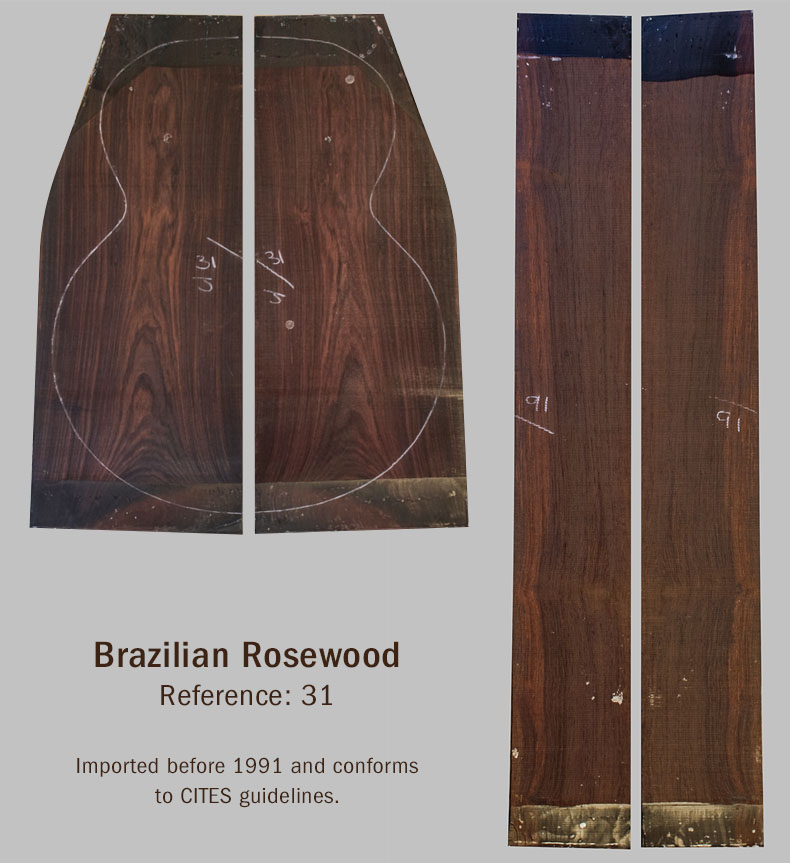
Only seven sets available.
The traditional and most revered wood for guitar back and sides is Brazilian Rosewood. This wood has a beautiful rich variety of brown and purple colors in it, and makes a warm rich sounding guitar with great resonance and volume. Brazilian Rosewood is no longer available in commercial quality or quantity. As a result it is more exspensive.
Brazilian Rosewood (Dalbergia Nigra) is a mythical tone-wood due to its scarcity and praised tone-qualities. It’s not only the beautiful grain and stunning looks that credit to this Myth. The myth started when Martin Guitars stopped using Brazilian rosewood on their 21, 28, 35, 41 and 45 models back in 1969. Indian rosewood, although a fine quality tone-wood, didn’t bring the subtle brilliance and dynamics Brazilian Rosewood did. Brazilian rosewood is only found in the eastern forests of the State of Bahia and southward to Espirito Santo and Rio de Janeiro and inlands of Brazil. Brazilian Rosewood is a protected species and due to its rarity a very expensive tone wood. In the early 1990s, Brazilian Rosewood was added to the list of endangered species under the Convention on International Trade in Endangered Species of Wild Fauna and Flora (CITES). To obtain Brazilian Rosewood today, it needs to be wood that was both harvested and exported before the ban, or harvested from natural fallen trees. Both require documentation of its provenance to permit exporting today. Due to the long-time exploitation, the tree has become very scarce in the more accessible regions. Brazilian Rosewood is harder than the commonly-used Indian Rosewood, but is about the same density and weighs the same, that’s around 1200kg per M3 (53 pounds/Cubic Feet).
The beauty of color and figure are legendary. The tone quality of Brazilian rosewood guitars is unique. Its balance, clarity of tone, quick response with a glass-like tap tone and its impressive dynamics set it aside from any other tonewood.







Only seven sets available.